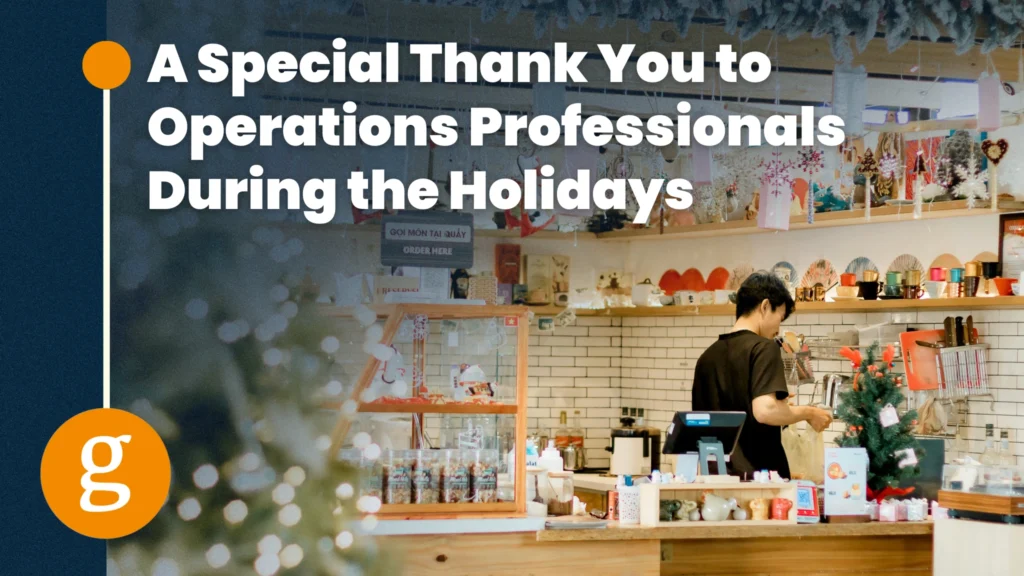What Changes Will the Restaurant Industry Sustain After COVID-19?
Goodwin Recruiting | Hiring Advice, Opportunity for All | May 4, 2021

Few sectors have been hit harder by the pandemic than those within the multibillion-dollar hospitality industry. In the face of sudden and shocking disruption, yet known for its signature resilience, the restaurant industry has adapted and changed.
Most immediate and notable are new approaches within the food and beverage (F&B) sector, the industry’s largest segment, where restaurant industry trends reflect bold innovation, shifting business models, and the creation of new paradigms for stability during and post-COVID-19.
Restaurant operators, professionals, and essential workers are monitoring which trends are likely to become permanent or left behind as the pandemic recedes. This article looks at widespread changes that have taken root and the landscape they paint for the future.
The Keepers: Diversification, new revenue streams, better SOPs
While operators are building new revenue opportunities and sustaining sales of existing offerings through alternative methods, trends of restaurant industry evolution are not solely about satisfying appetites. The pandemic exposed, indeed electrified, the need for other revenue drivers as well. These include better worker and customer care and safety measures, refined standard operating procedures (SOP), and new best practices that appeal to the heightened values and expectations of a more discerning public.
- Takeout, Delivery, and New Offerings
Takeout services have comprised the largest percentage of restaurant revenue during the pandemic, complemented by an explosion in third-party delivery services. Other new twists are also helping to spike revenue. Restaurants are introducing new offerings and enhancing customer experience to offset lost sales and keep customers coming back.
Once available only at the dine-in table, menu items and new offerings not previously sold are being packaged and sold to create a more compelling and rewarding experience. Among these are refined menus, bottled or packaged signature sauces, dressings, and marinades, as well as wines, desserts, complimentary face masks, and other merchandise. Takeout and delivery, along with retail goods and value-added perks, are here to stay.
- Sanitation and Cleanliness
The importance of sanitation is evolving for operators and consumers alike. A recent study reveals that sanitation standards influence customer purchases more than the price of menu items. The study, which compares pre-, during, and post-crisis trends, cites that in valuing cleanliness and sanitation over cost, consumers are willing to spend twice as much per month at restaurants that meet more stringent sanitation standards.
While currently high, customer cleanliness expectations are not expected to lower post-pandemic. Based on an Ecolab post-COVID-19 vaccine consumer research study, 95% of consumers want to see as much, or more cleaning and sanitation practices after COVID-19 vaccines are distributed. They also want to see visible evidence at restaurants, such as signage with cleaning protocols and hand sanitizer stations. They want to see staff cleaning the facility. Operators are responding to demand for higher sanitation levels and will continue to adapt as in-person dining resumes.
- Outdoor Dining
According to the National Restaurant Association’s March 2021 survey of 1,000 adults, consumers at large want restaurants to expand outdoor seating permanently. The Association’s survey of 6,000 restaurant operators in late 2020 says that since the beginning of the COVID-19 outbreak, more than 4 in 10 full-service operators and roughly 1 in 4 limited-service operators added outdoor seating on a sidewalk, parking lot, or street.
Al fresco dining morphed during the pandemic from a wholesale necessity to a welcome respite for Americans. It will likely remain a year-round accommodation by more restaurants, even in cold climates, where restaurants have invested in fire pits, heaters, tents and dining domes, or pods that withstand the elements while providing comfort and privacy. These are investments in the future that will come out of hibernation each winter.
- Contactless Transactions
Hospitality industry technology trends are fast transforming the ways people interact with and patronize food establishments. IT-enabled trends were tracking long before the pandemic hit, bringing speed, choice, and convenience to customers of restaurants of all types. Social distancing and other safety restrictions imposed by the pandemic not only accelerated but necessitated broad–scale contactless transaction capabilities.
Rapid advancements are being made toward more accessible and robust online menus, digital ordering and transaction processing, and cross-channel integration with loyalty programs, all supported by curbside and delivery services. Paperless, contactless transactions are certain to become more prolific due to their demonstrated ability to optimize customer convenience, engagement, fulfillment, and satisfaction.
As in-person dining returns, casual and fine dining brands will adopt tableside technology, such as QR codes and handheld payment devices, to reduce diner interactions with servers and speed visits. After the pandemic, the ability to turn tables faster will continue to boost sales.
- Ghost Kitchens
The pandemic ushered in the now–mature “ghost kitchen,” also called a virtual or cloud kitchen. These operations, whether affiliated with established restaurants or standing alone with no public face, exclusively focus on the delivery of orders placed online or over the phone. Except for delivery, they do not interact with or serve the public in person.
The low overhead and expedient turnaround features of this concept are nonetheless an investment, and given their success in satisfying incessant demand for more and more food delivery options, ghost kitchens are a new business model expected to outlive COVID-19.
- Diversity and Inclusion
The pandemic has prompted a new appreciation for essential workers, and along with this awakening has come acute public awareness and interest in how restaurants treat their people and customers. Operators are taking action to promote diversity and eliminate inequities within their organizations, from the kitchen to the front of the house and into the customer realm. Starbucks, for example, is changing how it promotes employees to ensure staff have equal opportunities to discover new positions.
Diversity and inclusion initiatives are part of a company’s mission, culture, and operating values, not likely to be abandoned, and they are expected to increase. The National Restaurant Association emphasizes that “inclusive restaurants embrace diversity and know how to make customers and crews feel welcome, an approach that pays dividends on many levels.” The Association shares these 10 best practices of truly hospitable restaurants.
- Team Competence
Another major result of the pandemic has been a birth by fire for restaurant employees at all levels who survived layoffs and furloughs. Remaining team members have had to learn by trial, error, and triumph how to pivot in a united and strategic manner and manage and sustain operations during a protracted crisis. Negotiating uncharted territory is never easy.
While dramatic attrition certainly diminished the number of battle-tested industry workers, those who have endured this storm gained invaluable experience and know-how for the road ahead. They will be in demand as restaurants re-fortify their teams post-pandemic.
Some restaurant trends have essential but short-lived purposes
- Spacing Out Tables
Governors across the United States, and counties, cities, and towns within each state, often have differing safety and prevention guidelines for restaurants to prevent the spread of COVID-19. The widely enforced restriction of spacing tables and parties apart by a minimum of six feet is already eroding in varying capacities in several states. While health experts believe these moves should wait until vaccination rates increase and the pandemic is no longer a public threat, liberation is indeed returning when spacing tables and other restrictions will be lifted by governors and local state officials on a grand scale.
- Limited Menus
Early in the pandemic, and for several (still-persistent) reasons, restaurants began shortening their menus. The trend helped streamline operations, reduce costs, and ease the intricacies of providing a full menu of diverse offerings. Limiting menus also helps operators navigate supply chain disruptions and inventory instability while easing the logistics of providing food in new and different ways.
- Fine Dining Out of a Box
While consumers have appreciated still being able to buy, taste, and enjoy prepared fine foods during the pandemic, it’s not the same when the meal comes in a box. This trend is sure to disappear. People are eager to get back to their favorite haunts and enjoy the full fine dining experience, including the environment, professional wait staff, and other nuances.
- Blind Faith
Thrust into survival mode, restaurants got lean during the pandemic, cutting non-essential expenditures down to the bone. When things stabilize, it is unlikely that operators will continue operating and spending in the same ways. Strategy and metrics will rule the day. Strong trends will drive decisions, and data and analytics will be used across the business to improve resource allocation, from IT to marketing, menu development, staffing, equipment, supply chain and inventory management, renovation, operating hours, and more.
Are You Prepared to Grow?
The steady resurgence of jobs in the U.S. hospitality sector signals America’s gradual return to restaurants. At this point, few economists expect the pandemic to put U.S. economic recovery in reverse again. As one labor economist recently stated, “This time is different, and that’s because of vaccines. It’s real this time.”
Restaurants have demonstrated extraordinary resilience and innovation and are now at the precipice of a new frontier. However, this is no time to wait and see what happens next. Just like before the pandemic, success awaits those who remain agile, move to capitalize on durable trends, and consistently find new ways to grow revenue.
Goodwin Recruiting’s VP of Recruiting, Allegra Highsmith, shares her views on the future of work and respective hiring needs within hospitality, “The hospitality industry has always viewed staffing as key, but because of the daily focus on operations and the guest experience, the mechanics of hiring are often pushed to the back burner. Having a recruiting agency that you trust and that is assisting you not only in finding great people, but as a constant resource and consultant, is an expense that many organizations have realized they can’t afford to sacrifice.”
With deep expertise in the hospitality industry, Goodwin Recruiting helps operators onboard the right staff for current times and assists professionals in making the best career moves so that all are ready once again for booming business and a new, exciting normal.
Share This Article














































